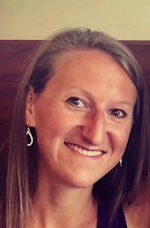There is only one molecule for water, H2O. The water we drink is the same molecule as the water we see in oceans and rivers, the water discharged back to the environment and the water manufacturers use in their processes. With varying levels and types of impurities binding, bonding or traveling with that water, we have both the opportunity and challenge to unbind, de-bond and separate those contaminants to restore integrity.
As municipalities face climate-related challenges, industrial facilities face pressure to make discharged water higher quality than its source and industries require higher volumes of ultrapure water.
Drinking water plants must meet local and federal regulatory requirements, and they must now do so with more emerging contaminants and variable source water quality. Rivers, lakes and aquifers used to be more predictable, but due to storm events, seawater intrusion into groundwater wells and water scarcity, it is now more challenging for municipal treatment plants to achieve compliance. In addition, non-point-source pollution can contribute to source water quality degradation over time and is less noticeable than point-source pollution, which is highly tracked.
New contaminants such as polyfluoroalkyl compounds, nitrogenated disinfection byproducts, and micropollutants require plants to upgrade or add treatment. Research and results in this space confirm that, despite these challenges, treatment is available and continues to become more efficient and cost-effective. Sometimes, simple multiple barrier treatment offers advantages, and other times, a more advanced compact treatment is better. Ultimately, water quality monitoring can help utilities understand the changes in source water quality, which contaminants are more detrimental and what treatments are needed to adjust to the changes.
Water Treatment in Chemical Plants
Similar to municipal water treatment facilities, chemical plants face variability in source water quality, but they are also challenged with consumer and regulatory pressure for cleaner wastewater discharge. Industries must manage water risk in terms of availability, operations and corporate reputation.
An example of this situation involves a plant required to adhere to both indirect discharge regulations for releasing wastewater into publicly owned treatment works (POTW) and direct discharge into the river. The river discharge regulation is designed to minimize disruption to the local ecosystem, while the POTW permits the facility to release pollutants up to a specified level.
In this scenario, the chemical plant can effectively navigate challenges by employing two powerful tools: source wastewater characterization and equalization. Regardless of the initial quality of the source water to the plant and the wastewater collected for treatment, understanding the extent of contamination and its origin enables the plant to gain better control over both influent source water and wastewater.
With this information, plants may switch sources or divert the water to different treatment depending on the quality data. Knowing the influent wastewater quality helps operators make data-driven decisions on whether to discharge or divert the water to further treatment. Many facilities benefit from equalization where high contamination loads are diverted until levels of pollutants subside and then the blended wastewater is moderated to enable efficient treatment and effectively meet discharge guidelines.
‘One-Water’ Approach
Some plants may require higher levels of water purity to improve products or processes. For example, semiconductor manufacturers often partner with water-treatment and water-metrology companies to optimize processes and improve detection of impurities. This joint innovation results in advancements across the water industry. Additionally, many companies seek mobile treatment solutions that can supply the site with additional pure water or temporary auxiliary treatment.
The increasing degradation and unpredictability of water quality entering a plant makes it difficult to hit contamination removal goals whether driven by regulations, risk mitigation or sustainability. But the importance of this one water molecule — this one limited resource — drives opportunity. With heightened pressure to make water more pure, there comes an opportunity to better understand incoming water quality.
This data allows plants to handle the changes required to meet both discharge quality and quality needed for processes. Treatment and support through mobile services are available even in situations where the water discharged or reused on-site is better quality than the source quality.
Managing water sources to be reliable and resilient requires a one-water approach, where the quality of the water and the purpose of the water drive decision-making. Water is a finite resource, but applying improved treatment technologies using water-quality data facilitates compliance with regulatory standards and helps chemical plants achieve sustainability goals.
References
- Elbein, Saul. "Majority of America’s underground water stores are drying up, study finds." Jan. 24, 2024. The Hill. https://thehill.com/policy/equilibrium-sustainability/4426143-majority-of-americas-underground-water-stores-are-drying-up-study-finds/.
- Kuzniewski, Saleha. "What is point source pollution?" Aug. 30, 2023. Wastewater Digest. https://www.wwdmag.com/what-is-articles/article/33010576/what-is-point-source-pollution.

